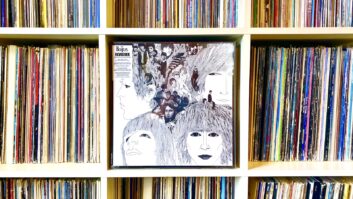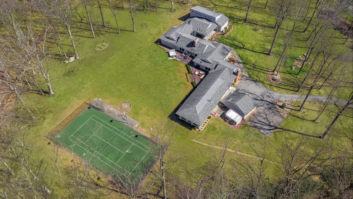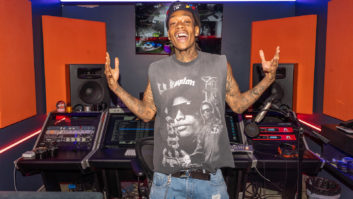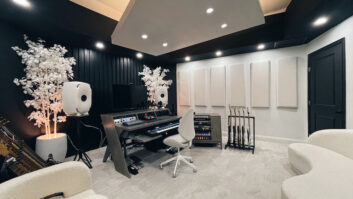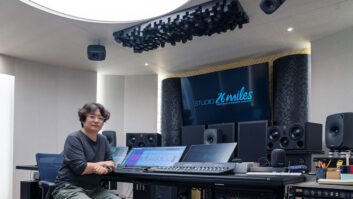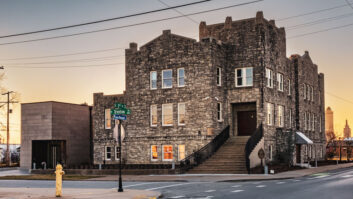Access to a wonderful recording environment—such as TheBarn—certainly facilitates the creative process. But the otherside is having some fun tools to work with, as well. We asked Bachmanto talk about some of the favorites in his toy box, and he wasenthusiastic in his response.
“We have a lot of good toys here, including 400 guitars. It’sthe world’s largest Gretsch collection and we just finishedphotographing them for trading cards that Fender [Gretsch’s new owner]is issuing with new sets of Gretsch strings.
“Besides my large guitar collection (about 350 Gretsches,couple dozen Fenders, couple dozen Gibsons and a couple dozenmiscellaneous other guitars), I have an extensive microphone collectionpicked up from secondhand and pawn shops in my world travels. These arein additon to my normal studio mikes. These oldies—butgoodies—looked great as decorations, but were basically unusableuntil I got the Groove Tube VIPRE preamp. It also works on (direct)acoustic guitars, drum machines, etc. Wow! What an amazing difference.VIPRE brings every piece of gear—with differentimpedances—to life, including vintage, high-impedance mics.
“Before the VIPRE, I often used an old 1950s, 4-channel Ampexmixer from the Norman Petty Studios in Clovis, New Mexico where BuddyHolly & the Crickets and The Fireballs recorded their hits. Afterhe sold the publishing of Buddy Holly’s music to Paul McCartney’s MPLCommunications, Norman scrapped his old recording board (two Ampex4-channel mixers) for a new setup. A friend of mine from Edmonton, WesDakus, was recording his band there at the time, saw the units in thetrash dumpster and asked for them. Sometime in the mid ’70’s, I tradedWes an Eventide 910 Harmonizer for one of the ‘Buddy Holly/NormanPetty’ mixers and still use it to this day. It gives everything awarmth and harmonic overtones that screams ‘rock androll.’
“My main console is a Neve 8058 MkII. Originally from the CBC(Canadian Broadcasting Corp.), it’s a small board with just 32inputs. John Vrtacic—the Vancouver genius who built Bob Rock’sstudio and Metallica’s studio—rebuilt my board as 64-inputs withthose great blue EQs. I also have some Neve 1081 EQs in a lunchbox anda bunch of Neve outboard limiters. I also have some original grayTeletronix limiters from Sunnyvale, California—with matchingconsecutive serial numbers—some UREI 1176s and LA-4s, LA-5s and anew Chiswick Reach compressor/limiter that’s handmade in London. It’s alot like an old Fairchild—very sweet.
“I have a great engineer here—Andy Bowmer—whohelped build the studio with John Vrtacic. They recommended theoriginal RADAR, and then we went with the new 96kHz, 48-track RADAR,which has pretty much replaced all of our 2-inch tape. I also do a lotof Pro Tools stuff and have just finished a jazz album on that.
“I just got a fantastic new piece of gear: It’s theSuperscope PSD300 CD Recorder. You can put in a CD and change the tempoand pitch and burn a new CD with that. It’s the greatest tool forsongwriting. I just came back from Sweden with a demo in G, and wanteda guy to sing it in B. So I got the Superscope, dialed in a new key,set the tempo and burned a new CD for the singer. I’ve also used it ondrum loops that might be pitched high, but I wanted the kick drum to beJohn Bonham-low. I can then burn new CDs at different pitches, but atthe same tempo. This machine is fabulous.”
